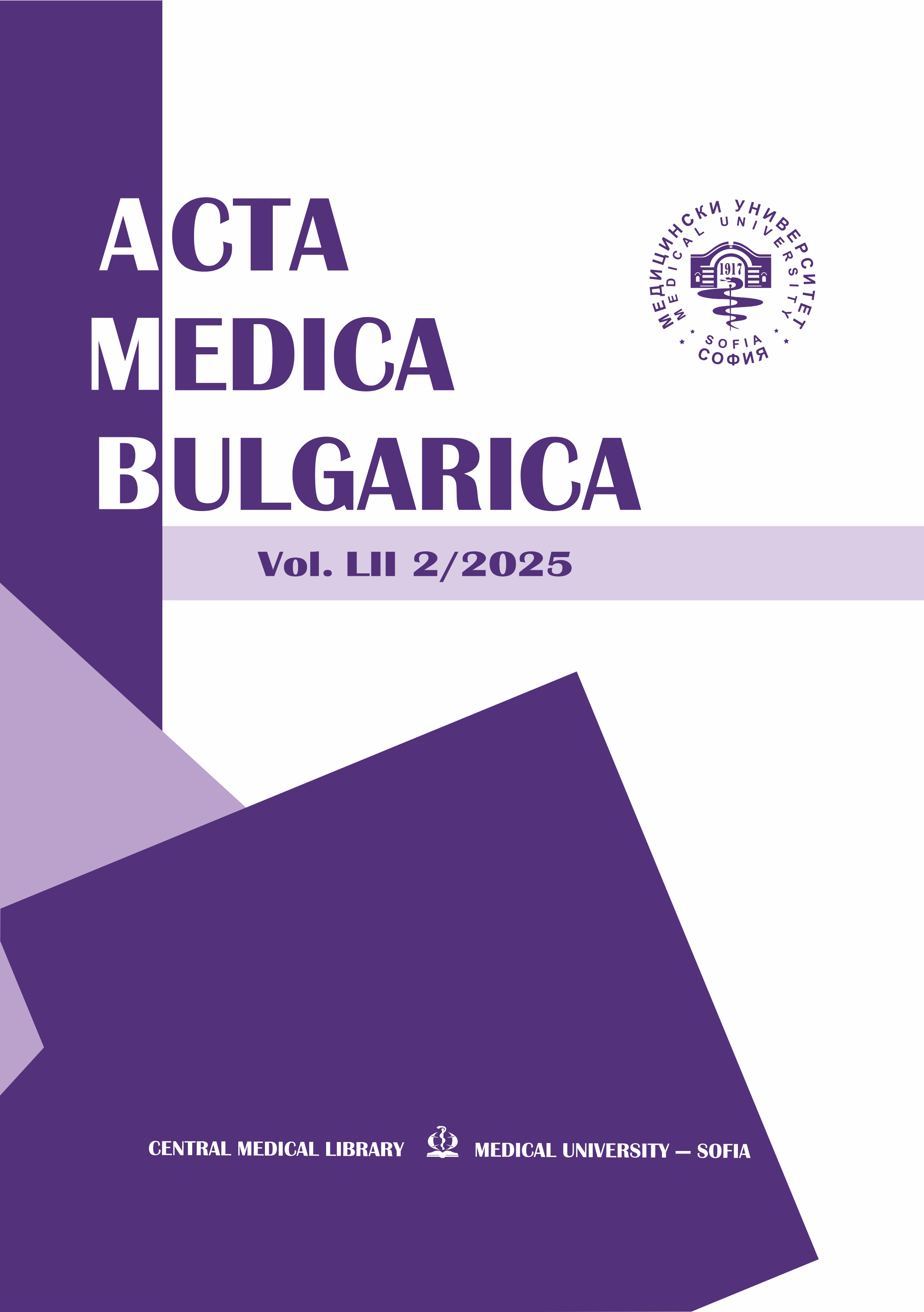Osteoma of the posterior wall of the sphenoid sinus in a 29-year-old woman – a case report
DOI:
https://doi.org/10.2478/AMB-2025-0049Keywords:
sphenoid sinus, osteomas of the sphenoid sinus, MRI examination of the skull base, CT of the paranasal sinuses and skull base, chordoma of the sphenoid sinus, transsphenoidal approaches to the skull baseAbstract
Skull base osteomas are rare tumors, typically asymptomatic and without specific clinical manifestations. These are slow-growing benign tumors that, in some cases, can reach signifi cant sizes and exert a mass eff ect on surrounding neural and vascular structures located at the skull base, leading to corresponding clinical symptoms. Tumors located on the posterior wall of the sphenoid sinus may appear on magnetic resonance imaging (MRI) and computed tomography (CT) as osteomas, polyps originating from the mucosa of the sphenoid sinus, chordomas, or chondrosarcomas. During the second and third decades of life, chordomas and osteomas are commonly encountered tumors. The two imaging modalities are interrelated and complementary since CT visualizes bony structures eff ectively, while MRI is superior for soft tissues and brain parenchyma. In the present case report, we describe a 29-year-old woman presenting with symptoms of numbness in the right limbs, dizziness, and nausea, without vomiting. She reported dropping objects with her right hand. An MRI of the brain was performed, revealing a lesion localized on the posterior wall of the sphenoid sinus, extending to the clivus and infiltrating the inferior surface of the sella turcica. The lesion showed increased signal intensity on T2-weighted sequences. Given the small size of the tumor and the absence of corresponding clinical manifestations, the lesion is subject to clinical monitoring. Surgical approaches for the removal of such tumors include the endoscopic transsphenoidal approach to the skull base or the sublabial transsphenoidal approach. Complications associated with these surgical interventions may involve dural laceration and subsequent cerebrospinal fluid leakage, as well as potential damage to critical vessels or nerves.
References
Chen CY, Ying SH, Yao MS et al. Sphenoid sinus osteoma at the sella turcica associated with empty sella: CT and MR imaging findings. AJNR Am J Neuroradiol. 2008 Mar;29(3):550-1. doi: 10.3174/ajnr.A0935.
Aksakal C, Beyhan M, Gökçe E. Evaluation of the Association between Paranasal Sinus Osteomas and Anatomic Variations
Using Computed Tomography. Turk Arch Otorhinolaryngol. 2021 Mar;59(1):54-64. doi: 10.4274/tao.2020.5811.
Strek P, Zagólski O, Wywiał A et al. Osteoma of the sphenoid sinus. B-ENT. 2005;1(1):39-41.
Abarca-Olivas J, Bärtschi P, Monjas-Cánovas I et al. Three-Dimensional Reconstruction of the Sphenoid Sinus Anatomy for Presurgical Planning with Free OSIRIX Software. J Neurol Surg B Skull Base. 2021 Mar 12;83(Suppl 2):e244-e252. doi:10.1055/s-0041-1725169.
Dell‘Aversana Orabona G, Salzano G, Iaconetta G et al. Facial osteomas: fourteen cases and a review of literature. Eur Rev Med Pharmacol Sci. 2015 May;19(10):1796-802.
Nazli Z, Abdul Fattah AW. A rare case of large sphenoethmoidal osteoma. Med J Malaysia. 2017 Feb;72(1):60-61.
Tarsitano A, Ricotta F, Spinnato P et al. Craniofacial Osteomas: From Diagnosis to Therapy. J Clin Med. 2021 Nov 27;10(23):5584. doi: 10.3390/jcm10235584.
Eggesbø HB. Imaging of sinonasal tumours. Cancer Imaging. 2012 May 7;12:136-52. doi: 10.1102/1470-7330.2012.0015.
Chai A, Soon AYQ, Manish B, Tan JL. Ectopic sphenoid sinus pituitary adenoma masquerading as metastatic head and neck cancer. BMJ Case Rep. 2021 Mar 10;14(3):e240411. doi: 10.1136/bcr-2020-240411.
Li Y, Zhu JG, Li QQ et al. Ectopic invasive ACTH-secreting pituitary adenoma mimicking chordoma: a case report and literature review. BMC Neurol. 2023 Feb 23;23(1):81. doi: 10.1186/s12883-023-03124-7.
Canevari FR, Giourgos G, Pistochini A. The endoscopic transnasal paraseptal approach to a sphenoid sinus osteoma: case report and literature review. Ear Nose Throat J. 2013 Dec;92(12):E7-E10. Erratum in: Ear Nose Throat J. 2014 Apr-May;93(4-5):148. Pistocchini, Andrea [corrected to Pistochini, Andrea].
Yudoyono F, Sidabutar R, Dahlan RH et al. Surgical management of giant skull osteomas. Asian J Neurosurg. 2017 Jul-Sep;12(3):408-411. doi: 10.4103/1793-5482.154873.
Randachev Yu, Tsekova M, Popov T. Tsarica Yoanna – ISUL University General Hospital for Active Treatment, Medical University – Sofia, International Bulletin of Otorhinolaryngology.
Downloads
Published
Issue
Section
License
Copyright (c) 2025 K. Bechev, Ts. Stoitsev, D. Markov, V. Aleksiev, S. Markov (Author)

This work is licensed under a Creative Commons Attribution-NonCommercial-NoDerivatives 4.0 International License.
You are free to share, copy and redistribute the material in any medium or format under these terms.


 Journal Acta Medica Bulgarica
Journal Acta Medica Bulgarica 